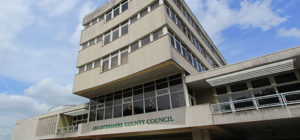Joseph Holmes discusses how West Berkshire Council’s office rationalisation has led to increased productivity, improved wellbeing and a better work/life balance, as well as significant cost savings.
Over the past 18 months, we at West Berkshire Council have been engaged in a project to rationalise our office space to deliver efficiency and financial savings as well as an enhanced working environment. We started the project in early autumn 2021, following a decision by the council’s executive in July.
The project involved moving all of the staff based in our three Newbury-based offices into one (approximately 1,000 of our 1,400 workforce). The main office was to be refurbished using a budget of £900k to create a wider range of desks, meeting rooms, benched desks and workspaces to reflect much greater hybrid working across the workforce.
We identified three staff work styles: “office” (always based in the office); “home” (roughly three days at home and two days in an office location); and “community” (based nearly all the time out across sites in the district but rarely in the office).
Consultation with staff was a key priority. We had a project board and communicated on a regular basis, accommodating move times as best we could. However, it didn’t help that the lift broke down in the middle of the moves, so we were not able to shift boxes for three weeks.
Staff were to be given an allowance of £150 a year to purchase equipment to work from home. Concurrently, we decided to refurbish our council chamber just for added complexity! Though we were very quick to have our meetings livestreamed with virtual public participation, it was clear that the chamber was not fit for purpose for hybrid meetings in the long term.
Net revenue savings of £250k are forecast to be delivered and have freed up two town centre offices now for a decision by members on their future.
Cost avoidance
We managed to deliver within budget and the works have brought the office environment up to the modern day – 34-inch computer screens have proved a hit, especially with any teams, like accountancy, who love a massive spreadsheet.
The office refurb was a month delayed, but worth it to get the space as we wanted. Net revenue savings of £250k are forecast to be delivered and have freed up two town centre offices now for a decision by members on their future.
We have also managed to reduce our carbon impact as a council by 163 tonnes, with a 45% reduction in C02 from staff mileage. At a time of rising energy costs, this has been a significant cost avoidance scheme and has mitigated our exposure to energy price rises.
The office space now has many different areas. Some more traditional banks of new desks, some high-seated areas, some pods and breakout spaces and more meeting rooms as well. All of these are here to enhance how we collaborate with one another.
No one has a permanent desk now – everyone must book in using a desk-booking system. There are also no offices for senior managers, so I am typing this sitting right in the middle of finance, where I usually sit, but I can be found anywhere amongst legal, HR, information and communications technology (ICT), or customer services on other days.
Staff feedback has been positive. An independent study completed on the project concluded that 51% of respondents stated they are more productive working at home or remotely, 44% stated their health and well-being was better and 61% agreed that their work/life balance was better. The key item that stuck out to develop was how to regain the feeling of “belonging” in a hybrid world.
There was much to learn from the process. Having another lift would have been helpful! It was a success because of our staff’s engagement and flexibility as well as having a strong project team, with ICT and property especially being very flexible. My main reflection was that you cannot communicate enough, especially with so many teams and so many different deadlines for moving, but also reminding all staff of the reasons for the project.
Eigenvector centrality
So far so, relatively, straightforward. What has been most interesting now is how we work together. There has been much in the press about organisations moving to full home working, others insisting all staff work in the office. This seems to imply that it is where you are physically sitting that is most important, rather than how you are actually connecting. This is where the Eigenvector centrality comes in!
The picture below shows how our staff interact in the office – the larger the circle, the more connections that person will make (by sitting in different places with different teams); the stronger the lines, the stronger the connection (i.e. sitting by the same people more), and the different colours represent different parts of the office.
This is important to understand. You can have someone sitting in an office, always at the same desk, always next to the same colleagues, making the same connections, and, when working at home, they may well just replicate these interactions. Yet, when we are at our best, and this was certainly borne out through the Covid-19 pandemic, was when we collaborate, coming together to find solutions.
Collaborations and cultures
Yes, this may not happen just because you are sitting by different people, but the importance of that connection with many different colleagues cannot be under-estimated. By knowing more people, by understanding the different dynamics of teams, by observing different collaborations and cultures, we are better able to adapt as leaders, bringing together the strengths of teams to solve challenges.
All these are areas that those clamouring to get back to full-time office working will highlight. But perhaps effective collaboration can best be achieved through a hybrid approach where there’s an opportunity to have the best of both worlds – better interaction and creativity in the office environment as well as the efficiency, focus time and employee benefits of more home working.
In finance, there are many challenges to be solved as well. With more and more automation and systems integration, there has been a shift in how we work. I was only reflecting with a colleague recently on whether they had actually seen a ledger print. The role of the accountant is becoming more and more about understanding patterns, learning from others, and trying to advise based on more and more data.
Being present in the same network, be that at home or in the office, does not give the same opportunity to work together. Perhaps we need to think in the future around hybrid working that it is not just about being present in one place or another, but about the quality of collaboration and connectivity that we need to enhance when we are meeting in person, and how we all fit into that wider (planetary!) system.
Joseph Holmes is executive director for resources at West Berkshire Council.
—————
FREE weekly newsletters
Subscribe to Room151 Newsletters
Room151 LinkedIn Community
Join here
Monthly Online Treasury Briefing
Sign up here with a .gov.uk email address
Room151 Webinars
Visit the Room151 channel















